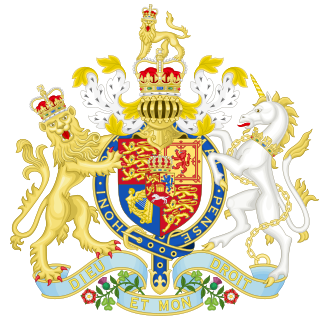 W
WThe Coinage Act 1816, also known as Liverpool's Act, defined the value of the pound sterling relative to gold. One troy pound of standard (22-carat) gold was defined as equivalent to £46 14s 6d., i.e. 44½ guineas, the guinea having been fixed in December 1717 at £1 1s exactly. According to its preamble, the purposes of the Act were to:prohibit the use of silver coins, for transactions larger than 40s establish a single gold standard for transactions of all sizes.
 W
WDecimal Day in the United Kingdom and in Ireland was 15 February 1971, the day on which each country decimalised its respective £sd currency of pounds, shillings, and pence.
 W
WThe Great Recoinage of 1816 was an attempt by the government of the United Kingdom of Great Britain and Ireland to re-stabilise its currency, the pound sterling, after the economic difficulties brought by the French Revolutionary Wars and the Napoleonic Wars.
 W
WThe British half farthing was a coin valued at 1/1,920 of a pound sterling, or one eighth of a penny. It was minted in copper for use in Ceylon, but in 1842 was also declared legal tender in the United Kingdom. Two different obverses were used. Like all British coinage, it bore the portrait of the monarch on the obverse.
 W
WThe history of the penny of Great Britain and the United Kingdom from 1714 to 1901, the period in which the House of Hanover reigned, saw the transformation of the penny from a little-used small silver coin to the bronze piece recognisable to modern-day Britons. All bear the portrait of the monarch on the obverse; copper and bronze pennies have a depiction of Britannia, the female personification of Britain, on the reverse.
 W
WThe British penny, a large, pre-decimal coin which continued the series of pennies which began in about the year 700, was struck intermittently during the 20th century until its withdrawal from circulation after 1970. From 1901 to 1970, the obverse of the bronze coin depicted the monarch who was reigning at the start of the year. The reverse, which featured an image of Britannia seated with shield, trident, and helm, was created by Leonard Charles Wyon based on an earlier design by his father, William Wyon. The coins were also used in British colonies and dominions that had not issued their own coins.
 W
WThe shilling (1/-) was a coin worth one twentieth of a pound sterling, or twelve pence. It was first minted in the reign of Henry VII as the testoon, and became known as the shilling from the Old English scilling, sometime in the mid-16th century, circulating until 1990. The word bob was sometimes used for a monetary value of several shillings, e.g. "ten-bob note". Following decimalisation on 15 February 1971 the coin had a value of five new pence, which was minted with the same size as the shilling until 1990, after which the shilling no longer remained legal tender. It was made from silver from its introduction in or around 1503 until 1946, and thereafter in cupronickel.
 W
WThe third farthing was a British coin which was produced in various years between 1827 and 1913.
 W
WThe British threepence (3d) coin, usually simply known as a threepence, thruppence, or thruppenny bit, was a unit of currency equalling one eightieth of a pound sterling, or three old pence sterling. It was used in the United Kingdom, and earlier in Great Britain and England. Similar denominations were later used throughout the British Empire and Commonwealth countries, notably in Australia, New Zealand and South Africa.